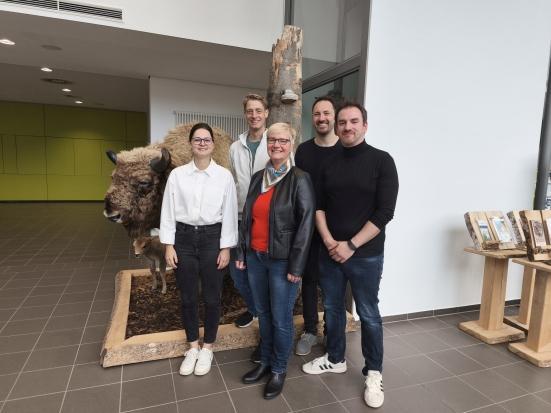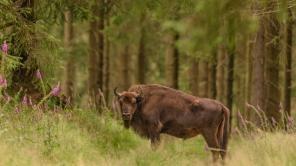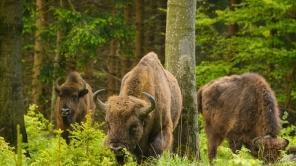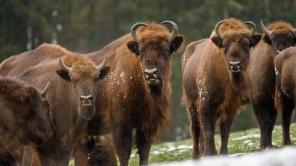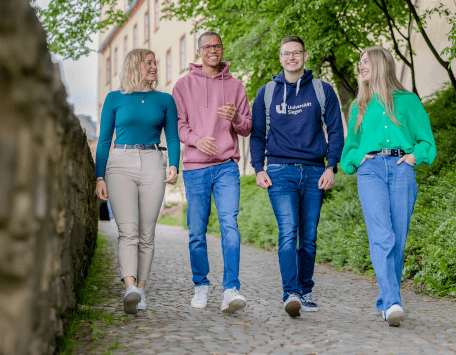Recognizing bison individually with AI
Big, strong, with shaggy fur: bison are impressive animals. Observing them in open-air enclosures or reserves is an impressive experience. In future, an app on a smartphone could help to recognize bison individually. A simple photo should be enough to retrieve the profile of the respective animal with the help of AI - such as age, gender or genetic characteristics. This is precisely the aim of the new research project "KIWI@SIWI", which has now been launched at the University of Siegen. It is being funded by the EU and the Ministry of Economic Affairs, Industry, Climate Protection and Energy (MWIKE) NRW with a total of around 1.5 million euros as part of the "NEXT.IN NRW" innovation competition.
"Identifying individual animals in the wild using a cell phone photo is completely new and not just exciting for nature lovers. The app could take herd management and behavioral observations to a whole new level and thus make a significant contribution to species conservation," says behavioral biologist Prof. Dr. Klaudia Witte from the University of Siegen. Previous methods such as ear tags are often stressful for the animals and impractical for researchers. AI-supported, contactless identification, on the other hand, could open up new opportunities: Diseases could be detected at an early stage, conflicts between humans and animals could be better avoided and the genetic diversity of herds could be safeguarded.
In order to develop the app, the researchers are first collecting images of bison in various bison projects. On this basis, the aim is to identify typical distinguishing features of the animals and train the AI on the corresponding data. What sounds simple at first is challenging in terms of technical implementation, explains Prof. Dr. Michael Möller, an expert in computer vision at the University of Siegen: "Computers can calculate well, but they are not intelligent. What we humans immediately recognize as a bison with our natural intelligence is initially just millions of numbers describing brightness and colors for computers."
To make the AI fit for bison recognition, it must first be trained with large data sets. This is followed by "fine tuning" so that individual animals can actually be identified. Added to this are the more difficult conditions for animals in the wild: the system has to learn to recognize animals even at great distances, in snow, rain or dense vegetation - even without a stable internet connection. Robust, small and powerful at the same time - these are the requirements for the AI. The University of Siegen is working with the software company NanoGiants to develop the app.
To ensure that the app is practicable and meets the requirements of future users, the project team wants to get them on board right from the start. Rangers, conservationists, forest farmers and representatives of bison projects and associations should be directly involved in the development of the app. Later on, the researchers would also like to investigate how the app is used by the various stakeholders and what impact its use has in practice: What does it change in the way bison are treated?
In the future, the app could also be extended to other animal species and be used in other areas. In agriculture, for example, it could support the management of large herds of sheep and cows that live on mountain pastures in summer. It would also be conceivable to equip zoos with the app to enable visitors to call up specific information about individual animals.
Background
The following chairs at the University of Siegen are involved in the "KIWI@SIWI" project (AI-supported individual identification and management implications for wild animals in the wild using the example of bison): The Chair of Computer Vision of Prof. Dr. Michael Möller, the Chair of Visual Computing of Jun-Prof. Dr. Jovita Lukasik, the Chair of Business Information Systems and New Media of Prof. Dr. Volker Wulf, and the Chair of Ecology and Behavioral Biology of Prof. Dr. Klaudia Witte. NanoGiants GmbH from Düsseldorf is also on board as a practical partner. The project started on 1.7.2025 and ends on 30.06.2028.
